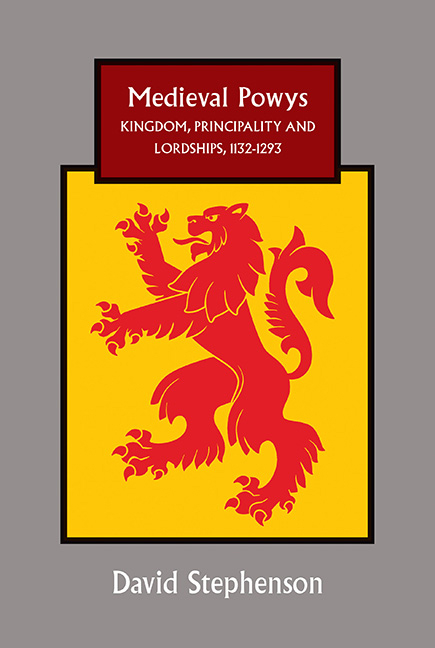Book contents
- Frontmatter
- Dedication
- Contents
- List of Illustrations
- Acknowledgements
- Abbreviations
- Map
- Miscellaneous Frontmatter
- Introduction: The problem of medieval Powys: historiography and sources
- Part I Powysian Polities in the Twelfth and Thirteenth Centuries: A Political Narrative
- Part II Characteristics of the Powysian Polities: Structures, Fault-Lines and Political Culture
- 9 Powysian polities I: aspects of governance
- 10 Powysian polities II: secular dynamics; fragmentation and integration
- 11 Powysian polities III: the ecclesiastical dimension
- 12 Some Powysian perspectives: fears and aspirations
- Appendices
- Select bibliography
- Index
- Miscellaneous Endmatter
11 - Powysian polities III: the ecclesiastical dimension
from Part II - Characteristics of the Powysian Polities: Structures, Fault-Lines and Political Culture
Published online by Cambridge University Press: 29 April 2017
- Frontmatter
- Dedication
- Contents
- List of Illustrations
- Acknowledgements
- Abbreviations
- Map
- Miscellaneous Frontmatter
- Introduction: The problem of medieval Powys: historiography and sources
- Part I Powysian Polities in the Twelfth and Thirteenth Centuries: A Political Narrative
- Part II Characteristics of the Powysian Polities: Structures, Fault-Lines and Political Culture
- 9 Powysian polities I: aspects of governance
- 10 Powysian polities II: secular dynamics; fragmentation and integration
- 11 Powysian polities III: the ecclesiastical dimension
- 12 Some Powysian perspectives: fears and aspirations
- Appendices
- Select bibliography
- Index
- Miscellaneous Endmatter
Summary
The extent to which medieval ecclesiastical organisation and devotional attachments – to particular churches or saints’ cults – reflected more worldly loyalties and relationships is a complex issue. The present chapter seeks to probe the relationship between the spiritual and the lay powers in Powysian society in the twelfth and thirteenth centuries. It will focus on the degree to which Powysian lords were able to manipulate ecclesiastical structures in their own interests, and how far lordly initiatives were restricted by the entrenched influence of traditional ecclesiastical institutions and sentiments. The stresses involved in such issues constitute one more aspect of regional politics that has been neglected in the historiographical emphasis on the drive to create a ‘national’ polity.
In the early twelfth century, ecclesiastical provision in the Powysian region appears to have been marked, as in other parts of Wales, by a relatively small number of important and long-established major churches which it is convenient to designate generically as monasteria. These had often been surrounded by a cluster of daughter-chapels. The most celebrated of the Powysian monasteria was surely Meifod, the principal church of the cult of Tysilio, which was the mother church of chapels dispersed over a large area, including Llanfair Caereinion in the west, the whole of Mechain and parts of the borderland including Alberbury in the east. Other major churches were distributed widely throughout Powys, and included Corwen in Edeirnion, Llanrhaeadr ym Mochnant, Llangollen in northern Nanheudwy, Llansilin in Cynllaith and, in Arwystli, Llandinam. This list is almost certainly not exhaustive. Traditional spiritual affiliations were therefore local or regional but, except for an attachment to the cult of Tysilio in the eastern and northern regions, did not extend at all widely throughout Powys. In that sense they appear initially to reflect aspects of the fragmentary tendency so clearly visible in the secular politics of twelfth- and thirteenth-century Powys. But the areas of influence of these mother churches, as defined by the distribution of daughter-chapels, often cut across the borders of cantrefi or other secular territorial divisions. The area dependent on Meifod is a case in point. It is generally believed, as noted above, to have encompassed a wide area that extended far beyond the region of Mechain in which Meifod was situated. The area of Meifod's superiority seems even to have embraced Welshpool and Guilsfield, in Swydd Llannerch Hudol and Swydd Ystrad Marchell respectively.
- Type
- Chapter
- Information
- Medieval PowysKingdom, Principality and Lordships, 1132-1293, pp. 248 - 273Publisher: Boydell & BrewerPrint publication year: 2016

